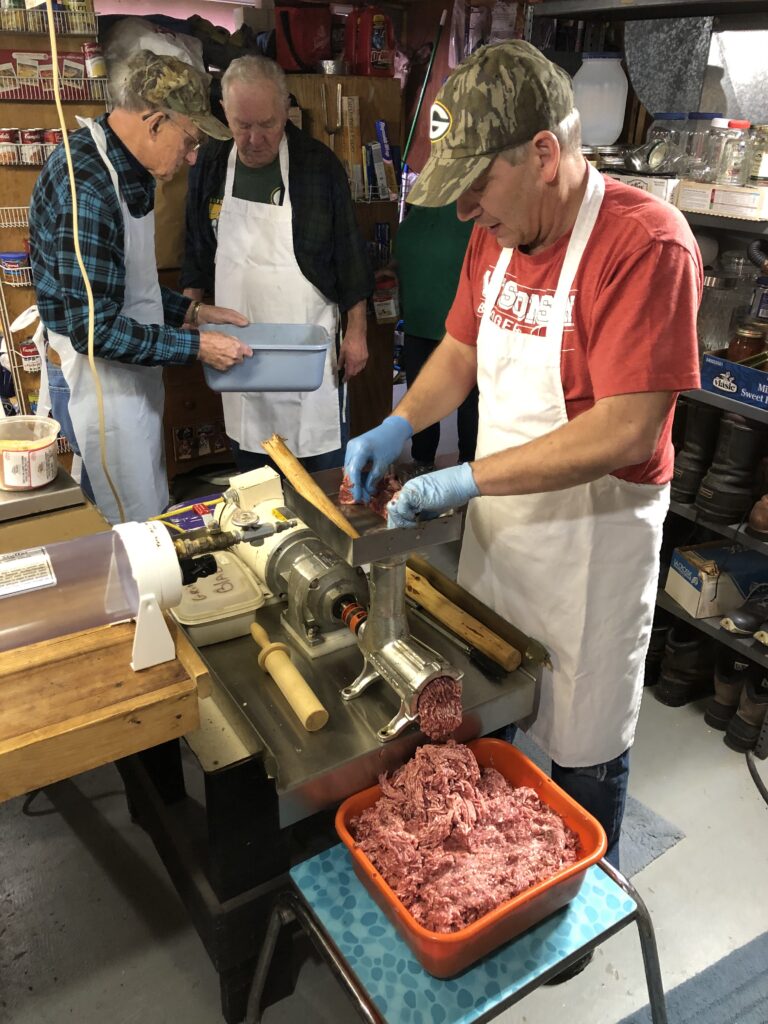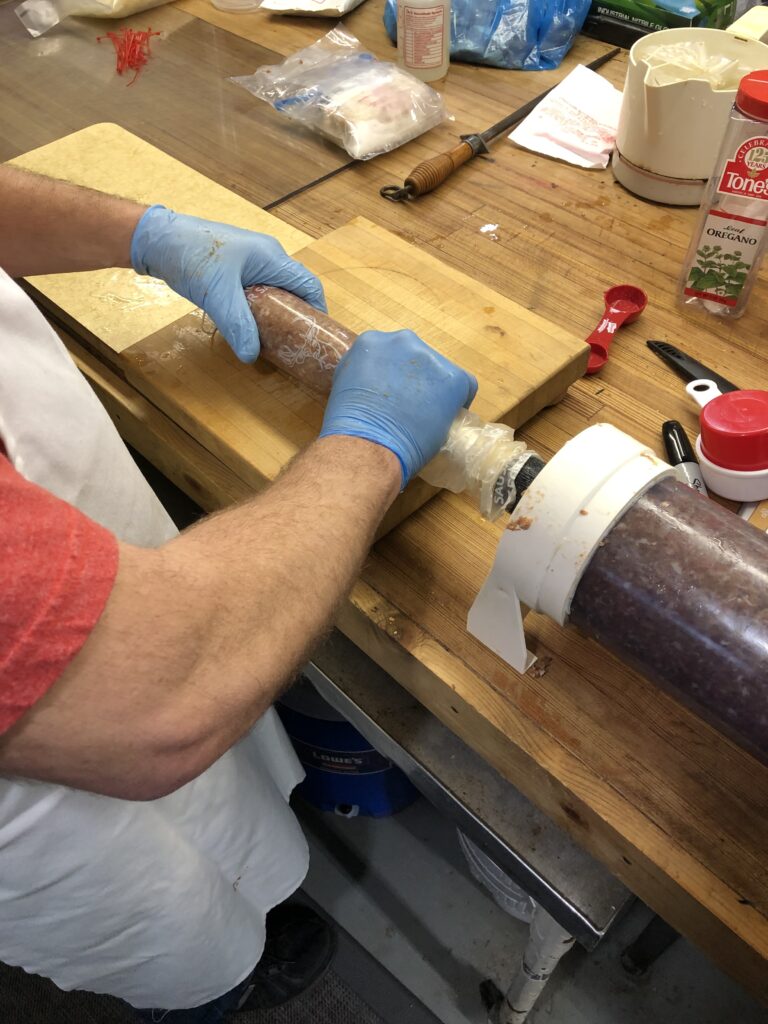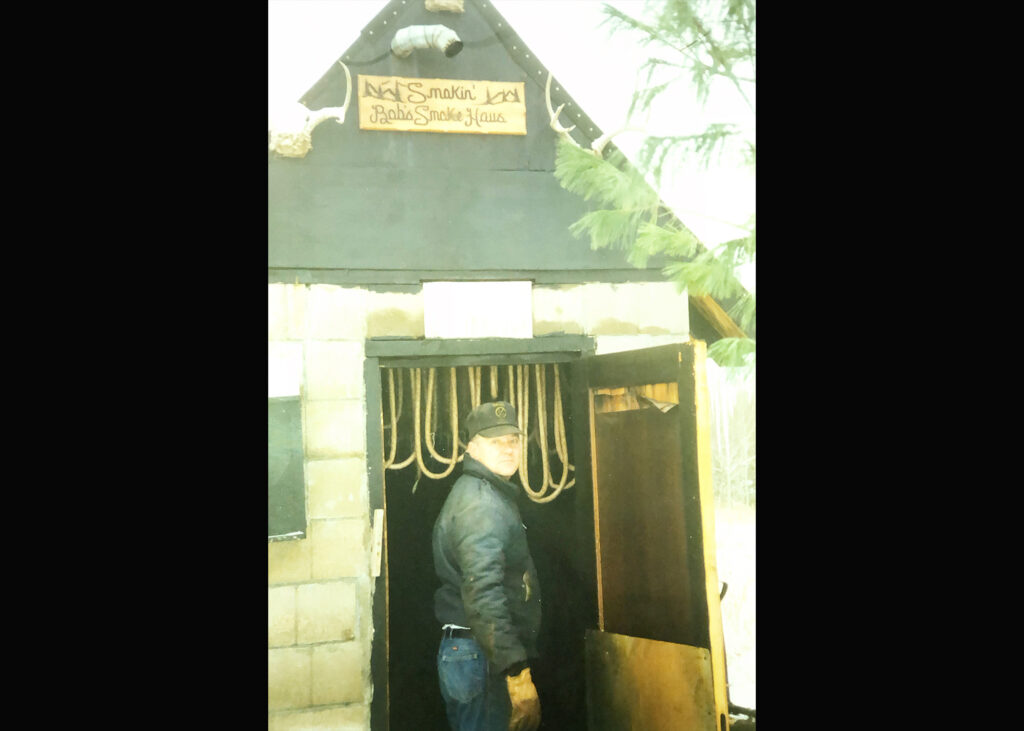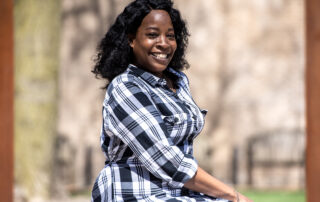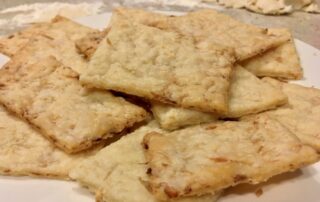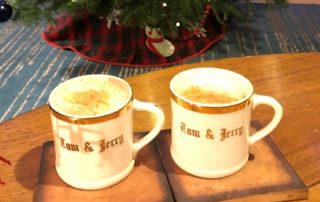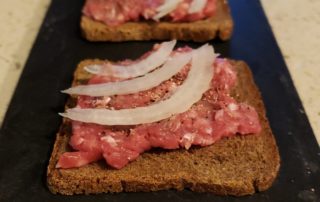“Does anyone want coffee or a bloody mary?”
It’s one of the first questions asked on a blustery January morning. In this Marathon County basement, four generations of my family have stomped the snow off their boots and reunited to take part in an annual tradition. Scattered on chairs, tables — even on top of the washing machine — are bowls of raw meat, some from a Whitetail doe harvested just two days prior.
Gun season and bow season are over, so everybody around here has venison.
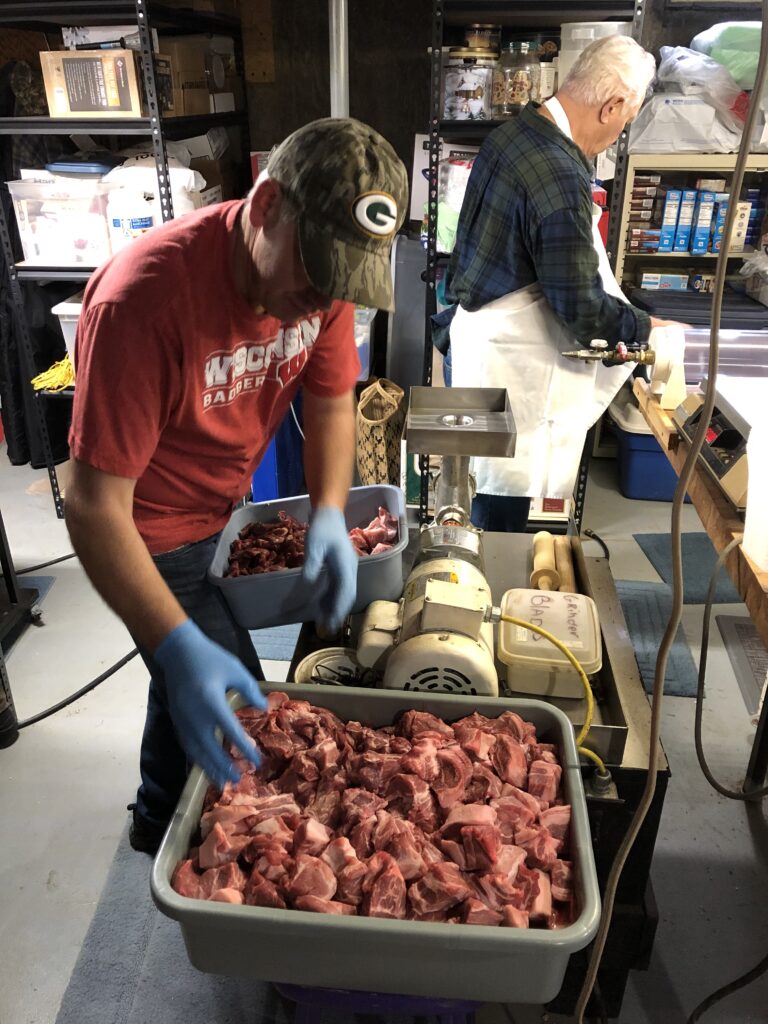
Scott Jahnke loads venison and local pork into the grinder. His dad, Bob Jahnke, preps the air-powered stuffer. (Photo by Briana Rupel)
Today, this basement has turned into a venison sausage-making haven. Of course, these hunters could just take their harvested meat to a processor in town who will have it ready in a couple of hours. So why not skip the work?
“Well, it’s the tradition and it’s the fun in getting together in doing something like this. It’s a reward for a good hunt, is what it amounts to really,” says Bob Schwartz, my grandpa, as he oils the grinder.
Also, these guys won’t be making your average sausage you might see in stores. The technique they’ll use is called cold-smoking, a meat preservation method used by many Northern cultures around the world for thousands of years.
“The expert right here has been doing this for a long time. A lot of it’s from the old country, brought up generation after generation,” says Schwartz.
That expert? My uncle, Bob Jahnke, who continues to pass on the German traditions he learned at his family’s smokehouse just three miles down the dirt road.
“Oh, it’s got to be 45 years ago. My uncle taught me how — been doin’ it ever since!” says Jahnke. “I’ve smoked elk hams, too. I think I even did a caribou once!”
Jahnke has modernized a few of the mechanisms from the old days, though they still have that rustic Wisconsin ingenuity. He slaps the old cast iron hand grinder, the one that’s so heavy the shorter family members would hang their whole body weight on it.
Now, he’s rigged up a grinder to a motor with a gear reduction.
“It’s just nice because it goes at such a low speed. You can see how fine (the meat) gets then, at the lower gear ratio — doesn’t get all curled up in the blade,” says Scott Jahnke, Bob’s son — and my cousin. Scott was about ten years old when he and his brother started learning from their dad. Along with the venison, he’s also adding local pork to the sausage.
“The reason being, you have to have fat in your meat. If you don’t have fat in your meat the sausage just won’t stay together well,” says Scott Jahnke.
- (left to right) Bob Schwartz, Bob Jahnke, and Scott Jahnke making sausage. (Photo by Briana Rupel)
- Scott Jahnke filling casings carefully, using air pressure. (Photo by Briana Rupel)
Of course, food traditions are nothing without the secret ingredient.
“The seasoning is almost the sacred cow, ya know? So much of this, and so many ounces of that,” says Schwartz. “Everybody says, ‘Oh this tastes good. How do you season it?’ Oh we can’t tell you, just eat some more.”
Throughout history, different families and butchers could be distinguished by their own unique blend of seasonings. These secrets stayed within the families as the recipes were passed down through generations.
“Because we cold smoke, you have to have some cure in it otherwise you could get sick. It’s pretty much raw,” says Scott Yahnke.
Because the meat isn’t cooked to 160 degrees it technically remains raw, so most food safety organizations, like the FDA, cannot recommend cold-smoking at home. That’s why it’s essential to learn from someone who really knows what they’re doing. Though smoke is both an antimicrobial and antioxidant, it’s not enough to safely preserve raw meat. Salt will thoroughly penetrate the meat and safely cure it.
After seasoning and curing the meat, the crew squeezes it into two-pound sticks, using a stuffer initially intended to run on water pressure that Scott Jahnke converted to run on air.
“We had one of these break once and that thing hit the wall over there,” laughs Scott Jahnke.
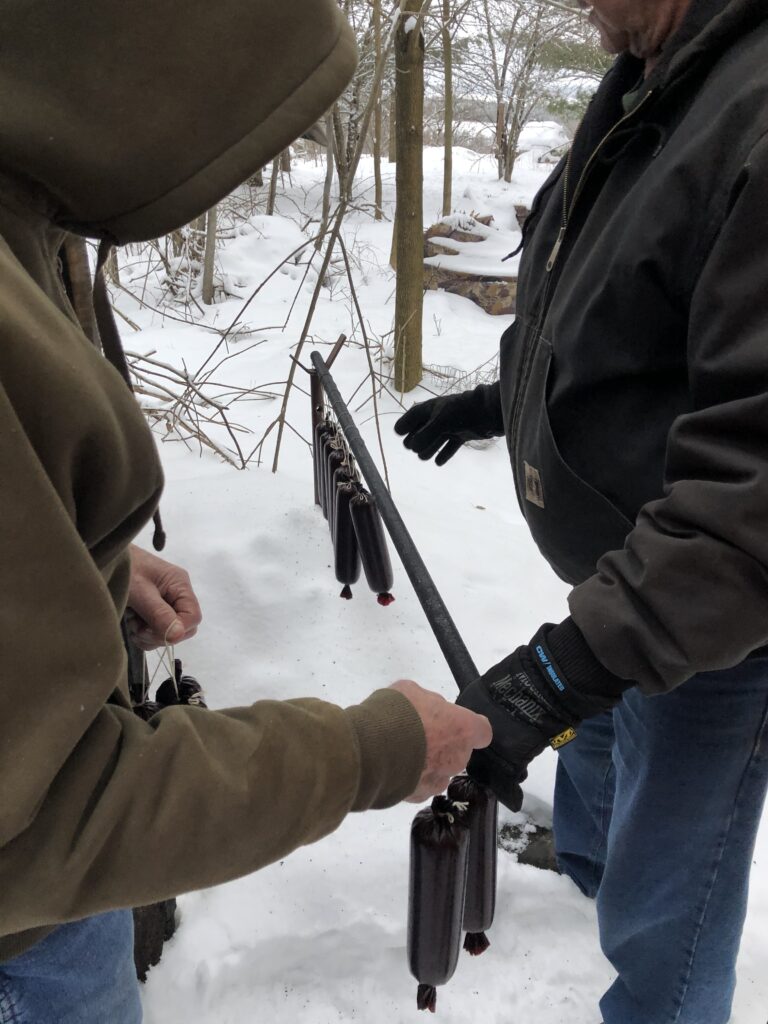
The sausage sticks are spaced apart on poles and will be hung up inside the smokehouse. (Photo by Briana Rupel)
With perfectly packed sausage sticks all laid out on flat racks, everyone grabs a stack to haul up the narrow staircase and out back to the smokehouse. In 1995, Bob Jahnke built this smokehouse out of cement. His grandchildren’s tiny handprints from nearly 30 years ago still there in the floor.
“You don’t want the meat to touch each other,” says Bob Jahnke. “You want the smoke to surround the whole entire casing. If something’s touching, it’s gonna stay warmer between the two pieces.”
Generally meat is smoked using hardwood — the resins in softwood increase the presence of carcinogens. Bob Jahnke knows what he’s looking for as he picks through his woodpile.
“Apple, cherry, and hickory. Apple’s too sweet for sausage… good for smoking fish though!”
Bob Jahnke stacks the wood in a small pit dug into the floor of the smokehouse. He controls the size of the fire by sliding a heavy iron lid to increase or decrease the opening.
The goal is to keep the temperature inside the smokehouse below 80 degrees. Bob Jahnke keeps a close watch on his fire, often checking on it three times a day.
Nature controls the timeframe, but Bob Jahnke uses weight to tell when the sticks are ready.
“I’ll take ’em downstairs and weigh ’em,” says Bob Jahnke. “When they lose 20 percent of their weight, then they’re done and that usually takes a little over a week.”
While his helpers rush back in to catch the end of the Packers game, Bob Jahnke stands without a visible shiver in winds that blow a rush of white across his land. A man who knows the best things in life take time, he looks content in knowing the tradition of cold-smoking will be carried on through the hands of generations to come. Surely they too will be taught the most secret ingredient of all: patience.

